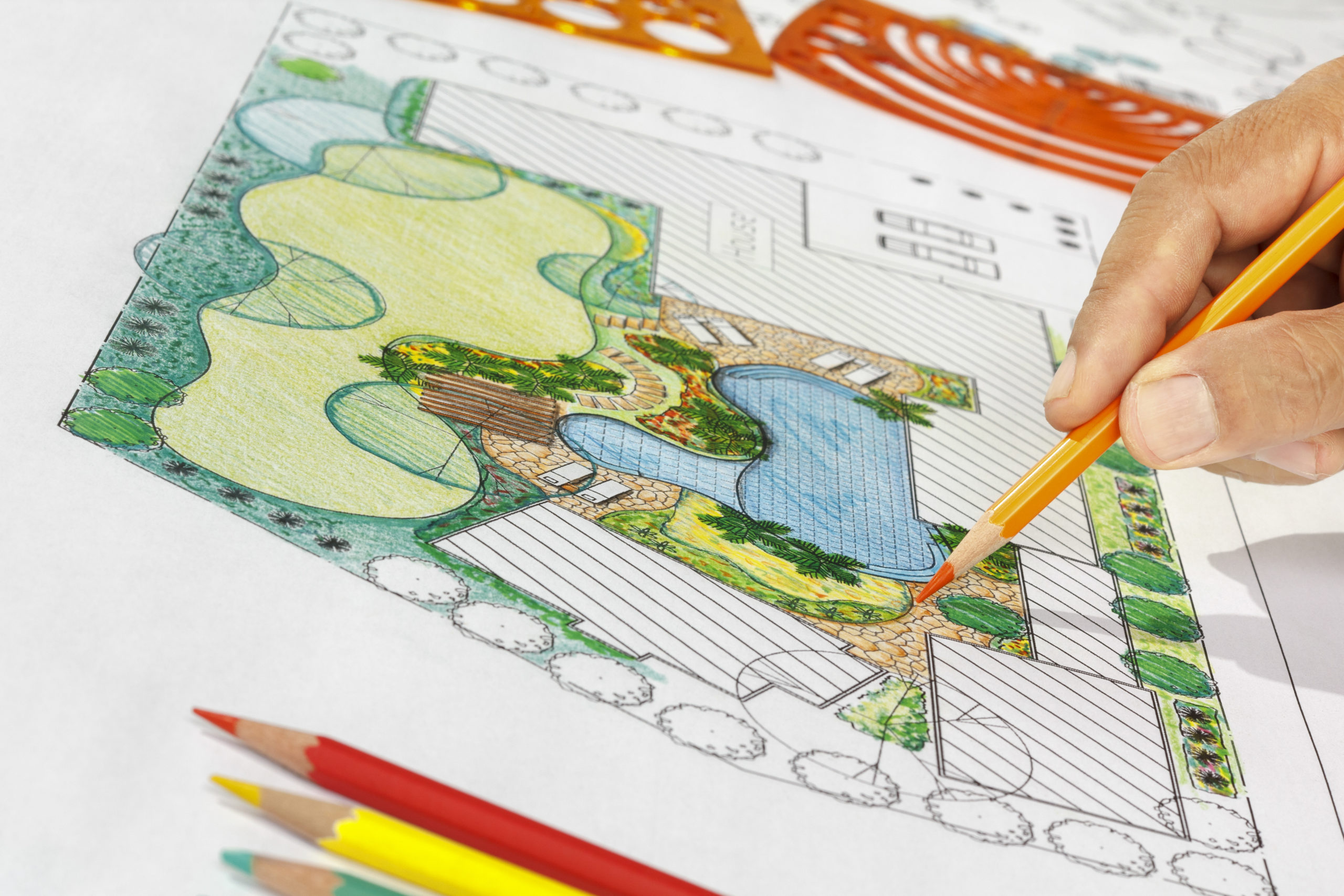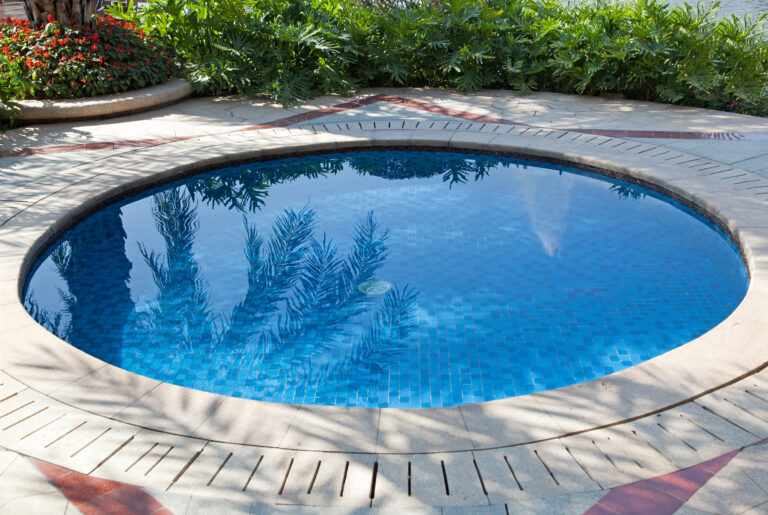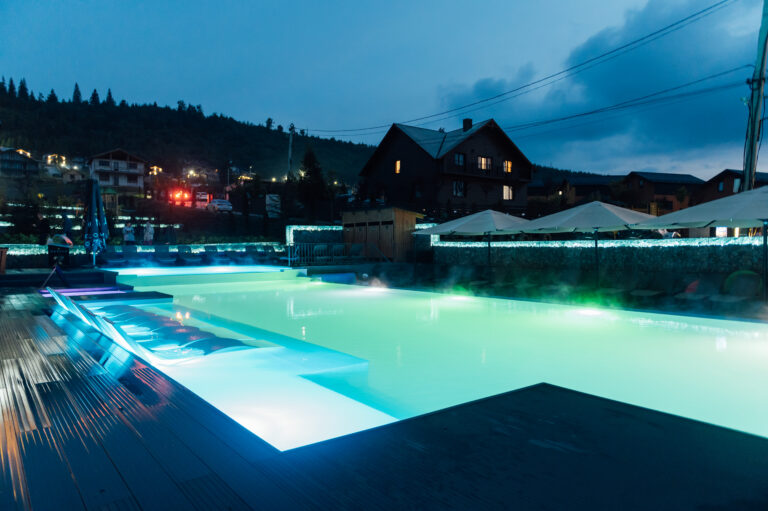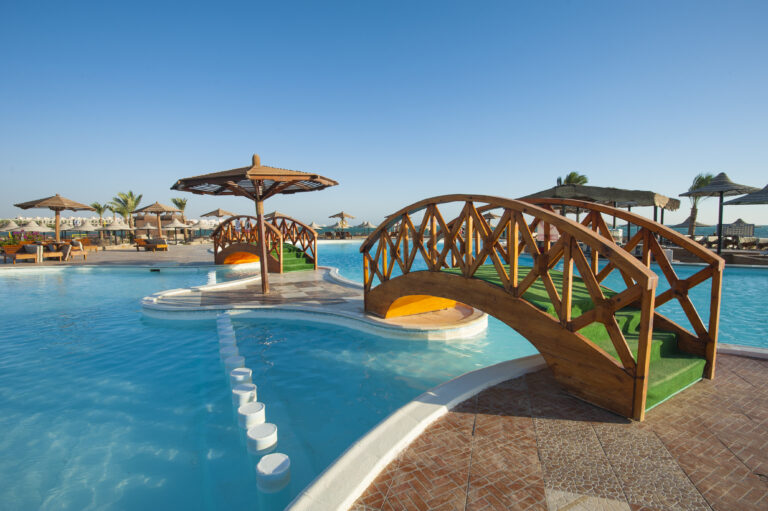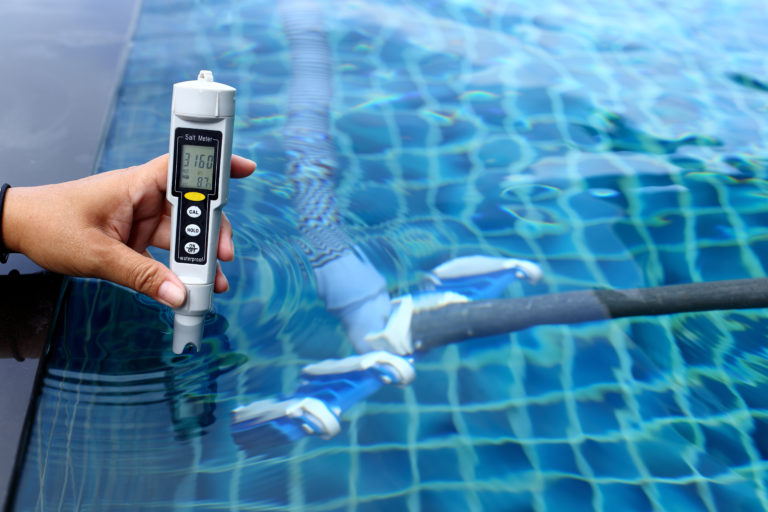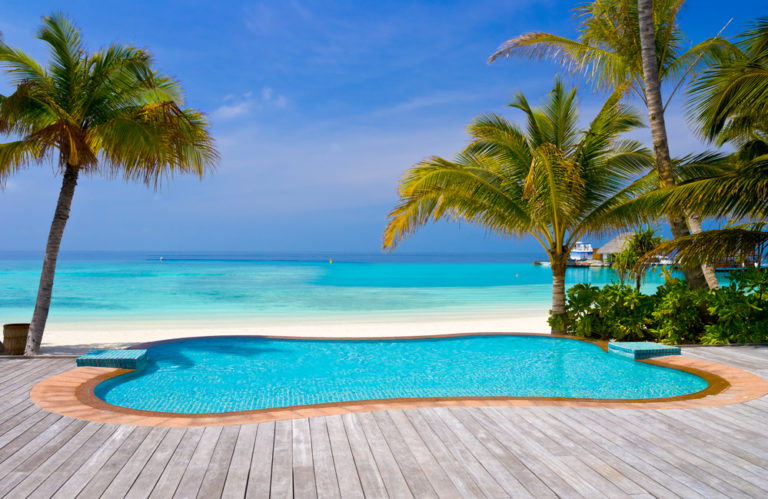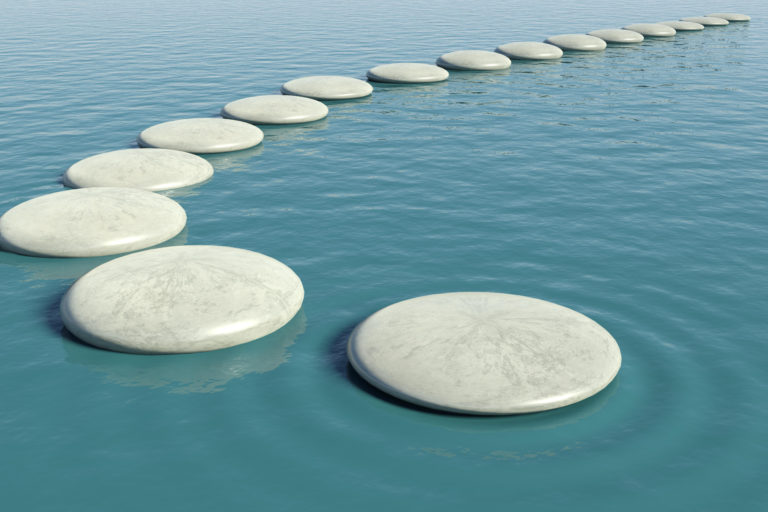The Art of Integrating Landscaping with Pool Design
You’re about to dive into the art of seamlessly integrating landscaping with pool design.
You’ll unravel how to achieve harmony, understand basic strategies, and learn from exceptional case studies.
Overcoming challenges won’t seem daunting when you’ve got our tips and tricks up your sleeve.
Let’s transform your backyard into a stunning oasis together!
The Importance of Harmony in Pool and Landscape Design
You’ve got to understand, it’s vitally important that there’s harmony between your pool and landscape design. This harmonious integration isn’t just about creating a visually appealing space. It also delivers practical benefits, enhancing the function and overall value of your property.
Harmony benefits are numerous – they range from increased aesthetic appeal to improved functionality. A well-coordinated design can enhance your outdoor space by seamlessly integrating the pool area with the surrounding landscape. You’ll find that entertaining guests or simply relaxing becomes much more enjoyable when you’re in an environment where every element complements each other.
Design aesthetics play a significant role in achieving this harmony. By considering factors like color coordination, layout planning, and material selection during the design process, you can create a cohesive look that enhances both your pool and landscaping areas. Think about how different elements such as plants, water features or patio furniture could blend together for a unified look.
So don’t underestimate the importance of harmony in your pool and landscape design. It’s not just about looks – it adds function and value too!
Understanding the Basics of Pool Landscaping
Before diving into the specifics, it’s essential that you grasp the fundamentals of enhancing your backyard oasis with well-thought-out greenery and outdoor elements. It’s not just about picking plants that you love; it’s about creating an overall aesthetic that ties in with your pool design.
1. Water Feature Integration: This is a crucial aspect to consider as water features can significantly enhance your pool area’s appeal. Whether it’s a waterfall cascading down rocks or a simple fountain, these elements add an extra layer of tranquility to your backyard.
2. Pool Lighting Options: Don’t overlook this feature! Proper lighting can transform your pool from an ordinary swimming spot to an enchanting night-time retreat. You’ve got options too – from underwater LED lights for a modern touch, to lanterns for more traditional ambiance.
3. Plant Selection: Choose plants with care! You’ll need species that thrive near pools (think: chlorine tolerance and minimal shedding) while also complementing the overall design scheme.
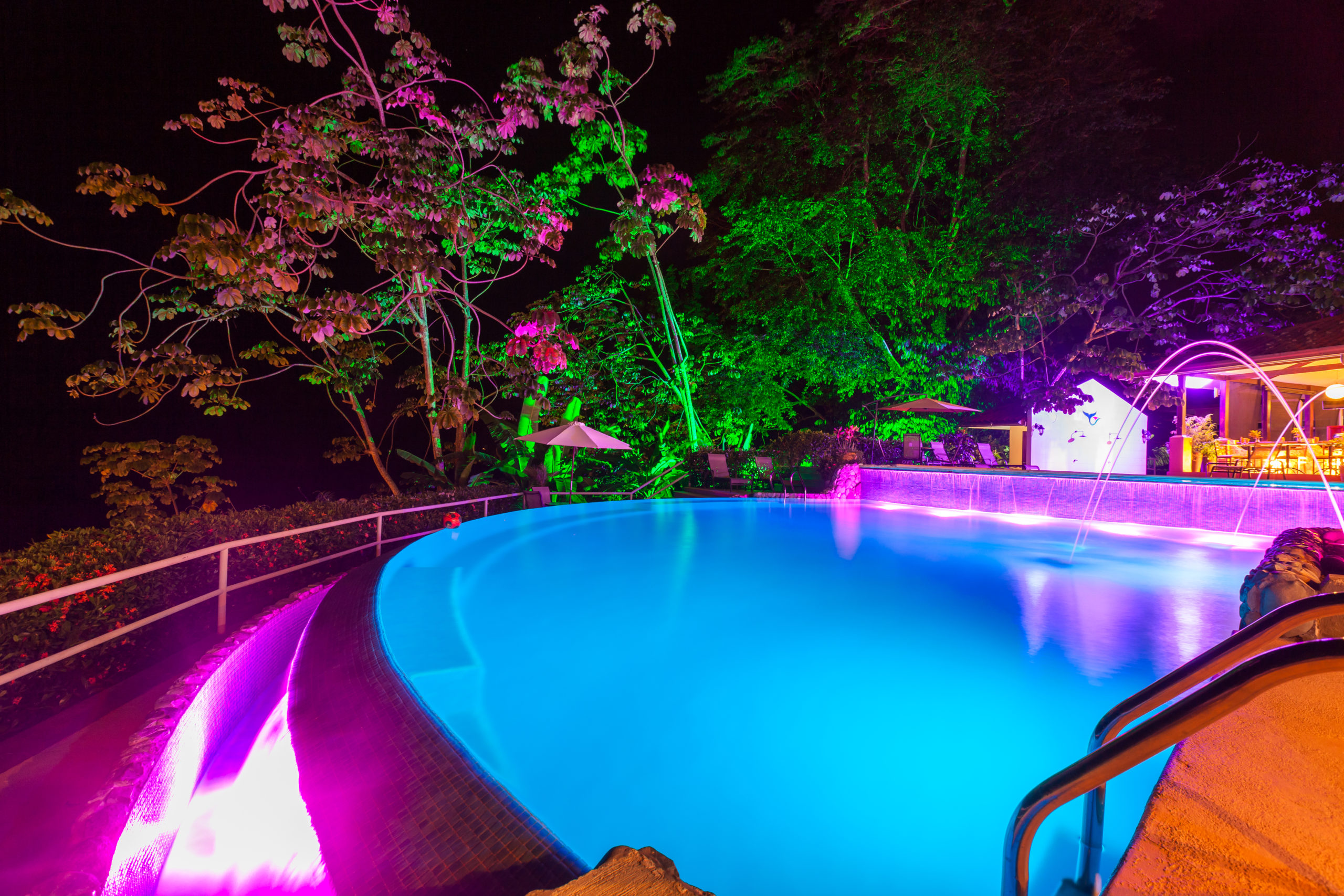
Strategies for Successful Integration of Landscaping and Pool Design
As you dive into the world of pool landscaping, there are several strategies you’ll need to consider.
The first is selecting complementary plants that not only thrive in a pool environment but also enhance your overall aesthetic.
Secondly, you’ll need to grasp how to balance pool-landscape proportions, ensuring your outdoor space doesn’t feel overwhelmed by either element.
Choosing Complementary Plants”
When you’re selecting plants for your pool area, it’s vital to choose ones that complement the overall design and aesthetic. The plant selection process isn’t as daunting as it sounds. You just need to keep in mind certain factors that can enhance the beauty of your poolside vegetation.
* Look for plants with a non-invasive root system.
* Consider foliage color and texture.
* Choose plants that can withstand chlorine or saltwater splashes.
* Opt for low-maintenance species.
Balancing Pool-Landscape Proportions
It’s crucial to strike the right balance between your water feature and the surrounding greenery in terms of size and scale. Pool landscape aesthetics are heavily influenced by these size considerations. You don’t want a pool so big that it overshadows your lush green oasis, nor do you want one so small that it becomes lost among the foliage.
Consider how each element will coexist. Use plants that complement not just the color of your pool but also its shape and size. Remember, this is about creating a harmonious outdoor living space where everything works together seamlessly.
You’re sculpting an environment, not just installing a pool or planting trees. So take care, plan well, and keep proportionality at the forefront of your design process.
Case Studies: Exceptional Pool and Landscape Integration
Let’s delve into some case studies that showcase exceptional integration of pool and landscape design. These designs have not only achieved aesthetic excellence but also show responsible use of resources, as evidenced by Environmental Impact Studies.
You’ll be amazed at how innovative material use can harmonize a pool with its surroundings. One such instance is the use of natural stone in place of traditional tiles for the pool deck. This choice not only enhances the visual appeal but also reduces the environmental footprint by avoiding synthetic materials.
Another fascinating example involves integrating a water recycling system within the landscaping and pool design. Here, rainwater is collected, filtered, and used to fill up the swimming pool or irrigate plants – a smart way to conserve water resources!
Don’t you find it incredible when design meets sustainability? It’s inspiring to see designers considering both beauty and ecology in their work. Remember, good design isn’t just about looking great; it should also respect our environment. That’s what these case studies demonstrate – proving that you can have an amazing pool area without causing harm to our planet!
Challenges in Merging Pool Design With Landscaping
You’ll likely encounter a few hurdles while trying to blend your swimming area with the surrounding greenery. But don’t worry, it’s not an impossible task. Sustainable solutions and careful material selection can help you overcome these challenges.
1. Design Compatibility: It’s essential that the pool design is in harmony with the landscape architecture. This might require some creativity on your part, but don’t be intimidated – it’s an opportunity to create something truly unique.
2. Material Selection: With so many options available, choosing materials can seem overwhelming. Remember, you’re aiming for sustainability as well as beauty; choose materials that are durable, low-maintenance, and eco-friendly.
3. Maintaining Natural Elements: Incorporating natural elements is key for a seamless transition between pool and landscape, but it isn’t always easy maintaining them.
4. Cost Efficiency: Sustainable solutions often come at a higher upfront cost, but remember they’ll save you money in maintenance down the line.
Take these hurdles head-on, and soon enough you’ll have a swimming area that doesn’t just exist within its surroundings – it enhances them!
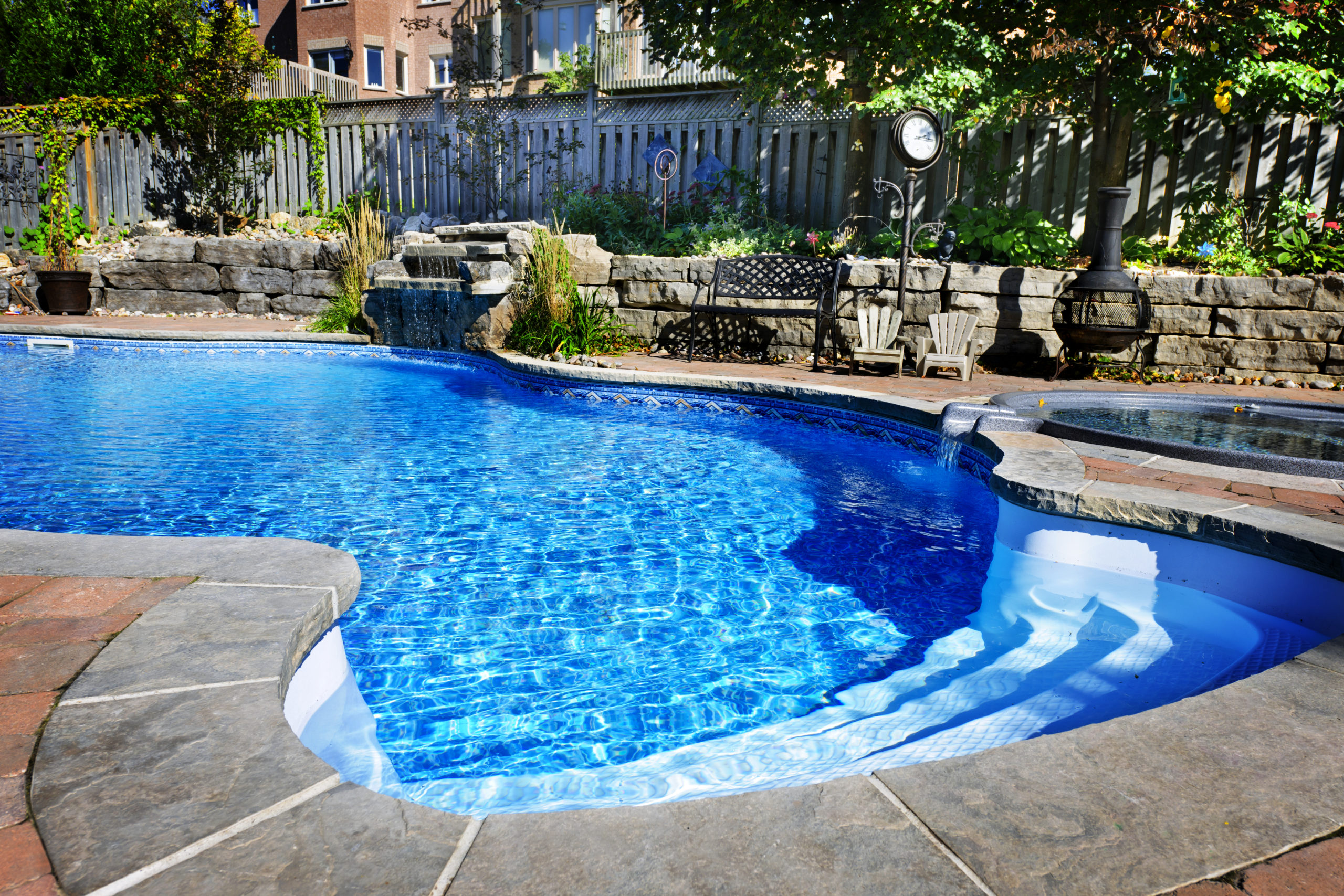
Tips and Tricks for Your Own Pool Landscaping Project
Here’re a few handy tips to make your backyard swimming oasis blend beautifully with the rest of your green space. You’ve got to consider two game-changing elements: pool lighting and water features.
Firstly, let’s talk about pool lighting. It’s not just for night-time swims; it’s also a fantastic way to highlight the beauty of your pool. Opt for LED lights that you can adjust in terms of brightness and color. They’ll add charm to your pool area while saving on energy costs.
Secondly, integrate water features into your design. A waterfall cascading from a natural stone wall or a tiered fountain in the middle of the pool can transform it into an artistic centerpiece, creating pleasant sounds and making the environment more relaxing.
Remember, both these elements should complement, not compete with each other or with existing landscaping features. If you’re struggling with this balance, don’t be shy about seeking professional advice.
Lastly, keep maintenance in mind as well. Any additions should be easy to clean and maintain so they continue adding value without becoming burdensome chores.
With these tips in mind, you’re all set to turn that backyard dream into reality!
Frequently Asked Questions
What Is the Average Cost of Integrating Landscaping With Pool Design?
It’s hard to pinpoint an average cost without knowing your budget planning and design options. Costs can vary greatly, but it’s possible you’ll spend several thousand dollars to integrate landscaping with pool design.
How Much Time Does It Generally Take to Complete a Pool and Landscape Integration Project?
In terms of project management, it generally takes around 6-12 weeks to complete a pool and landscape integration. However, this can vary depending on your design inspiration and specific project details.
Are There Specific Plants That Are Recommended or Discouraged in Pool Landscaping?
Yes, the plant selection process for pool landscaping is critical. You’re encouraged to choose plants that resist chlorine and have low littering tendencies. Poolside plant benefits include aesthetic appeal and shade provision.
How Can I Maintain My Pool and Landscape Integration Throughout the Seasons?
To maintain your pool and landscape integration throughout the seasons, you’ll need to make seasonal adaptations. Select pool friendly vegetation that thrives in different seasons for a year-round, vibrant look.
What Are the Safety Considerations When Integrating Landscaping With Pool Design?
When integrating landscaping with pool design, safety’s key. Consider lighting for visibility at night and drainage planning to prevent slippery surfaces. You wouldn’t want puddles causing accidents or poor lighting leading to unseen dangers.

